Paris Haute Couture week launches trends. Maybe it’s not visible from the first sight, but if you take some time to follow the shows, you will see that the hair, the make up, and of course the clothes, everything that you see on the models will be basically « expanded » by the ready-to-wear shows around the globe.
Thats why Paris Haute Couture week is usually called «the fashion laboratory ».
Sophisticated skirts, beautiful, easy to wear, are currently one of the biggest trends. They can be made from very different fabrics, from the sheer silk and the very lightweight cotton, to the thick tweed and wool.
There were a lot of beautiful skirts on the last Chanel Haute Couture Spring-Summer 2020 show. This runway was even not a “laboratory”, but clearly a library where you can fin all the trends and inspirations for the best skirts ever!
As we’ve opened the Spring Promotion of our Draping Course “Skirts: straight, wrap, pleated and gathered” starting on the 2nd of March, I’ve made a short short review of the most interesting skirts from Chanel Haute Couture that can give an idea of how the skirt draping techniques can be used.
If you 💕Wrap Skirts, especially from thick fabric, this skirt is a perfect example of how yours could look:
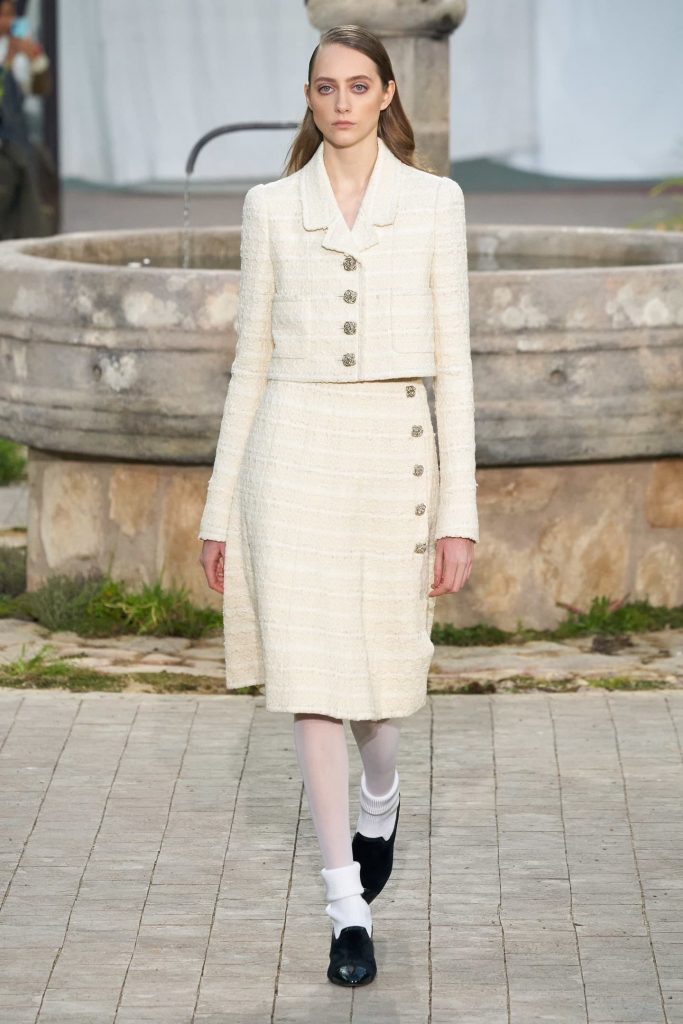
You are not obliged to choose the knee-high length, although the knee-high or below-the-knee are the best length for a wrap skirt. Take whatever length is comfortable for you, and you can also make a wrap skirt from a thin fabric.
And here is how the skirt looks when it’s draped on the dress form. This draping was done by one of our students from United States, Cari. She had little muslin so she has made a short skirt, but when you make your draping, you can choose any length wished, the techniques are the same.
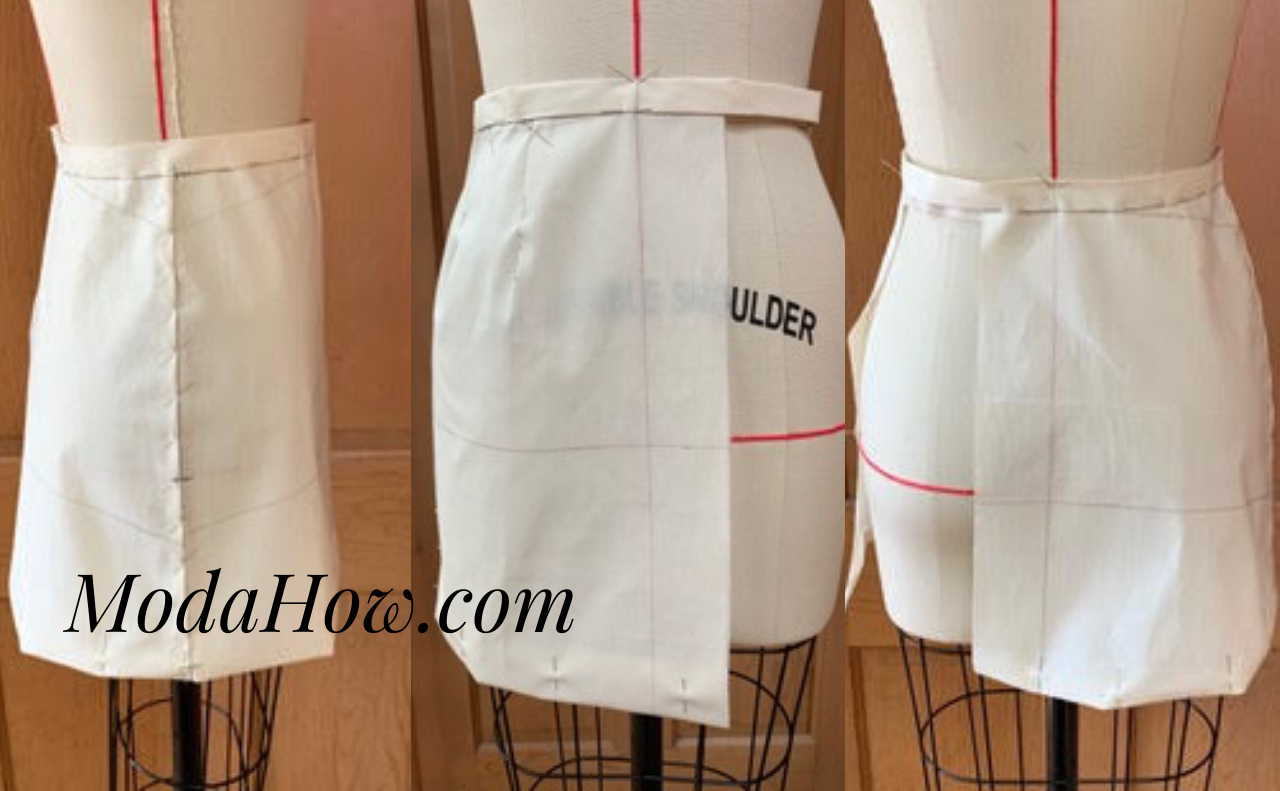
There was only one wrap skirt at Chanel, but a lot of pleated skirt of different sizes and types of pleats. Like this one:
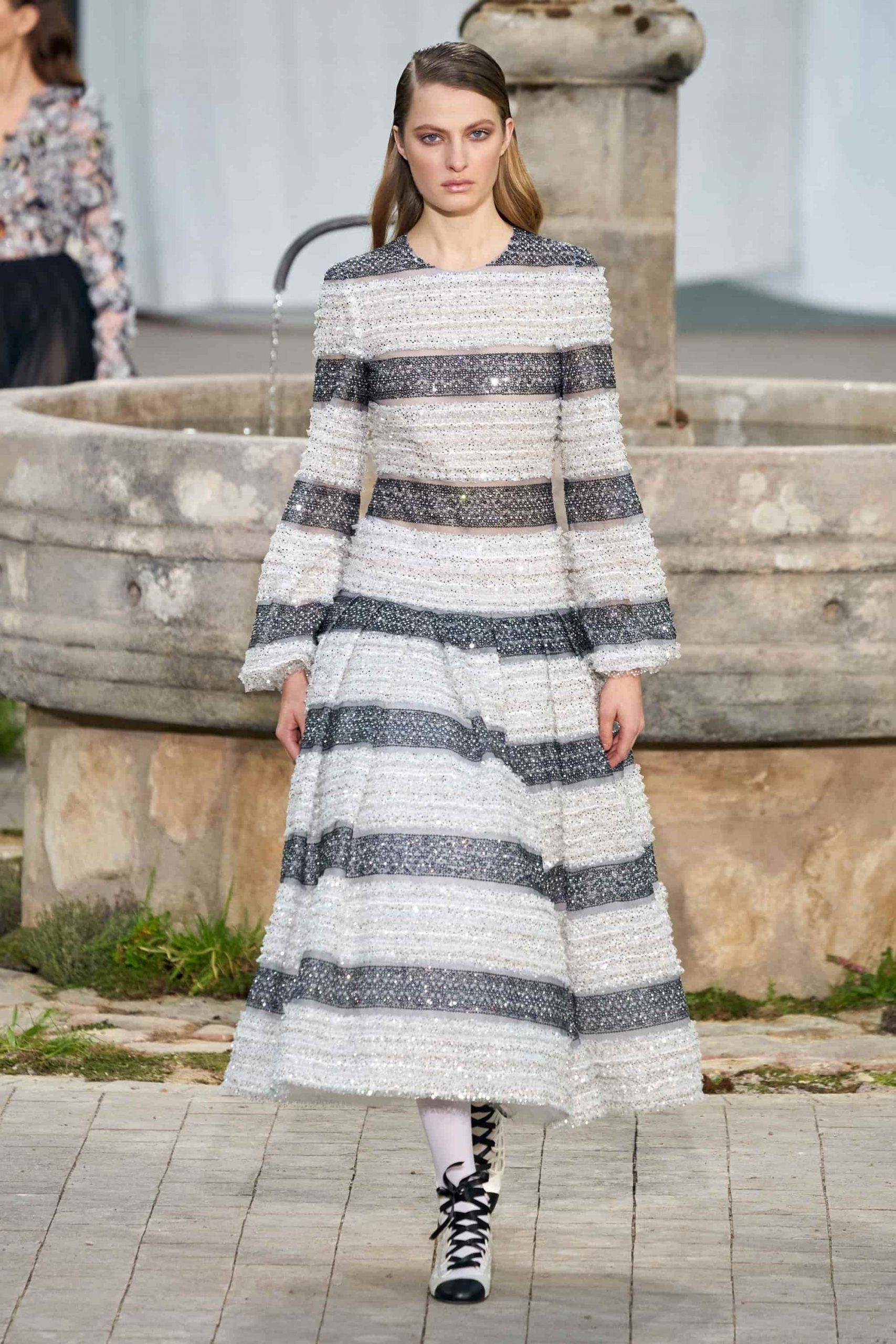
The pleats here are wide and regular. The belt is very large, and the “flaring” pleats start where your draping tape for the hip line is placed when you make your draping tape placement. If it will be too low, the skirt will loose its form. If it is too high, the skirt will not be beautiful (as well as the person inside it). That’s why it’s so important to learn the correct way of the ABC of draping – the placement of the draping tape, because you will be able to see the right “segments” of the body and to give the correct proportions to the garments you make.
Another pleated skirt, and totally different one. This time the skirt is made from a wonderful thin lace. Pleats are opened to the right at the right side of the garment and to the left at the left side of it. It looks more like a dress than like a skirt, but the principle of the pleats stays the same. Besides all the harmony of the dress lies the same principle, the placement of the draping tape, that creates a verticality/horizontality of the garment and the right proportions.
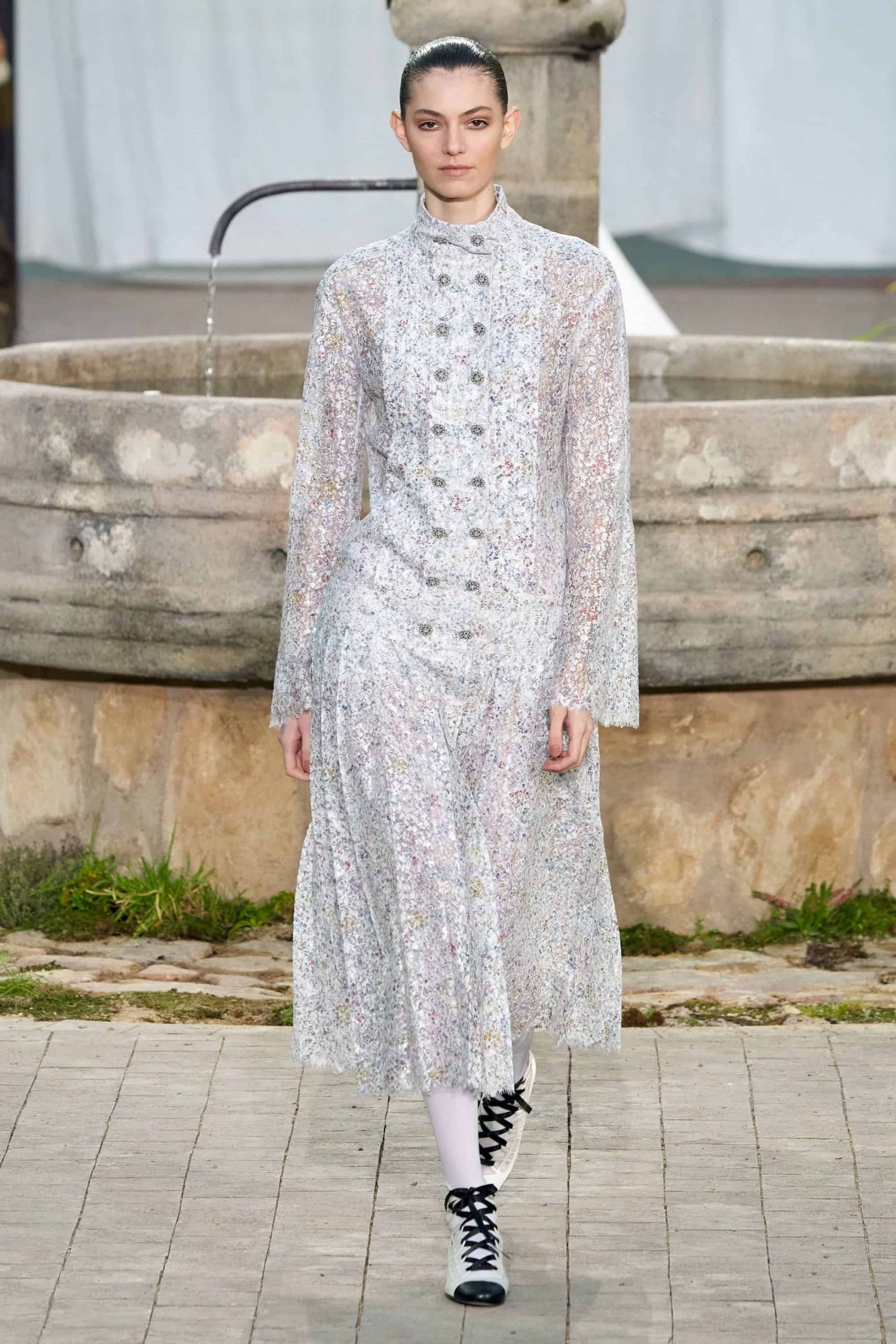
And totally surprising, a pleated skirt on the evening gown! Yes its an evening gown from the delicate pink fabric, very luxury, very embroidered, transparent. Very often we think that the evening dress is a sexy dress or a cloud tulle dress, with opened shoulders, but no, not here.
The cut of this dress is: T-shirt top and a pleated skirt. A calm and structured look. Do you see how pleats on the skirt can be used in different circumstances and with the different fabrics?
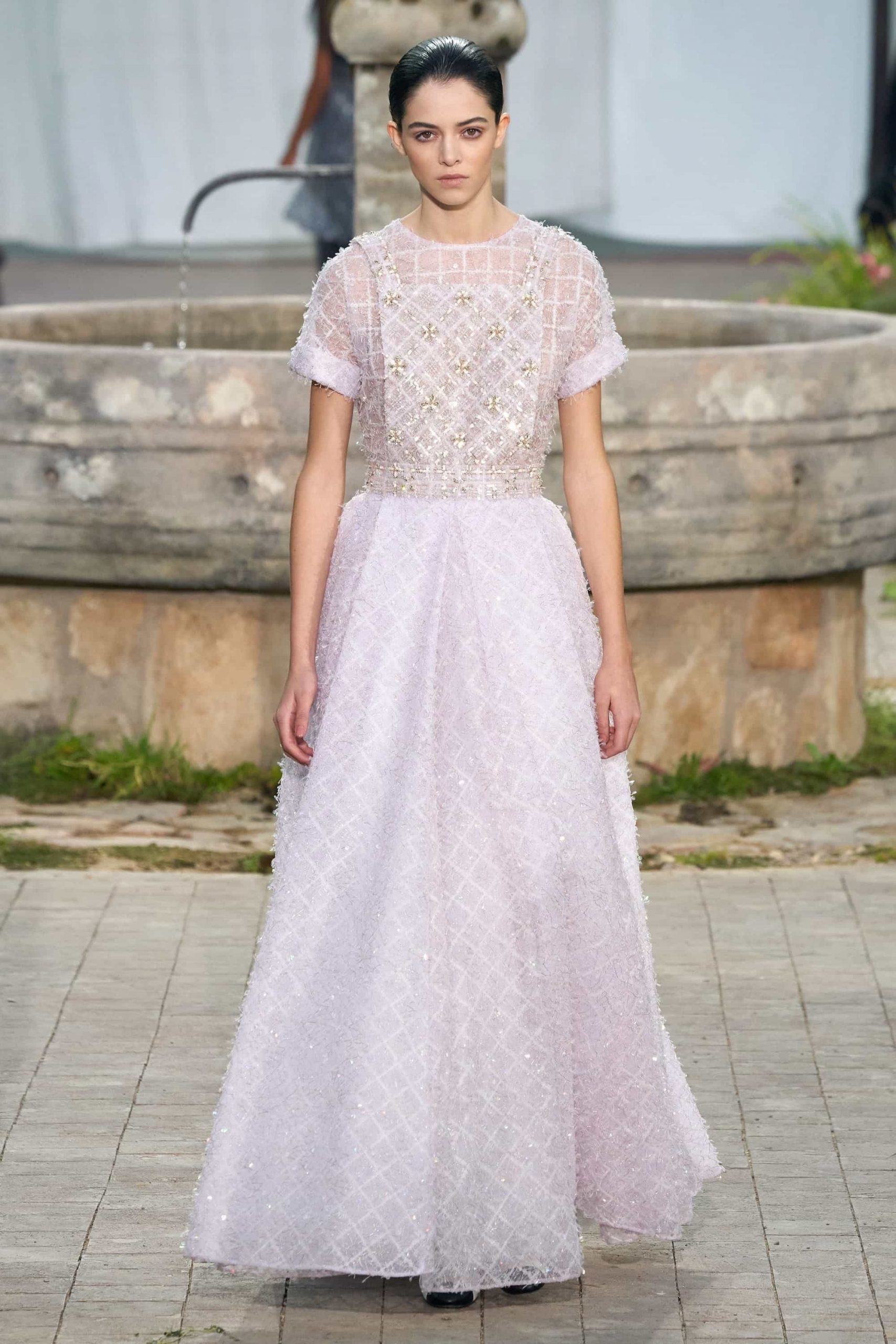
And to show you how the idea of the pleated skirt can start, here is the photo of the pleated skirt with a hollow pleat (the most difficult pleat to make) made by Aurélie Vibet, the teacher of the Skirts Draping Course:
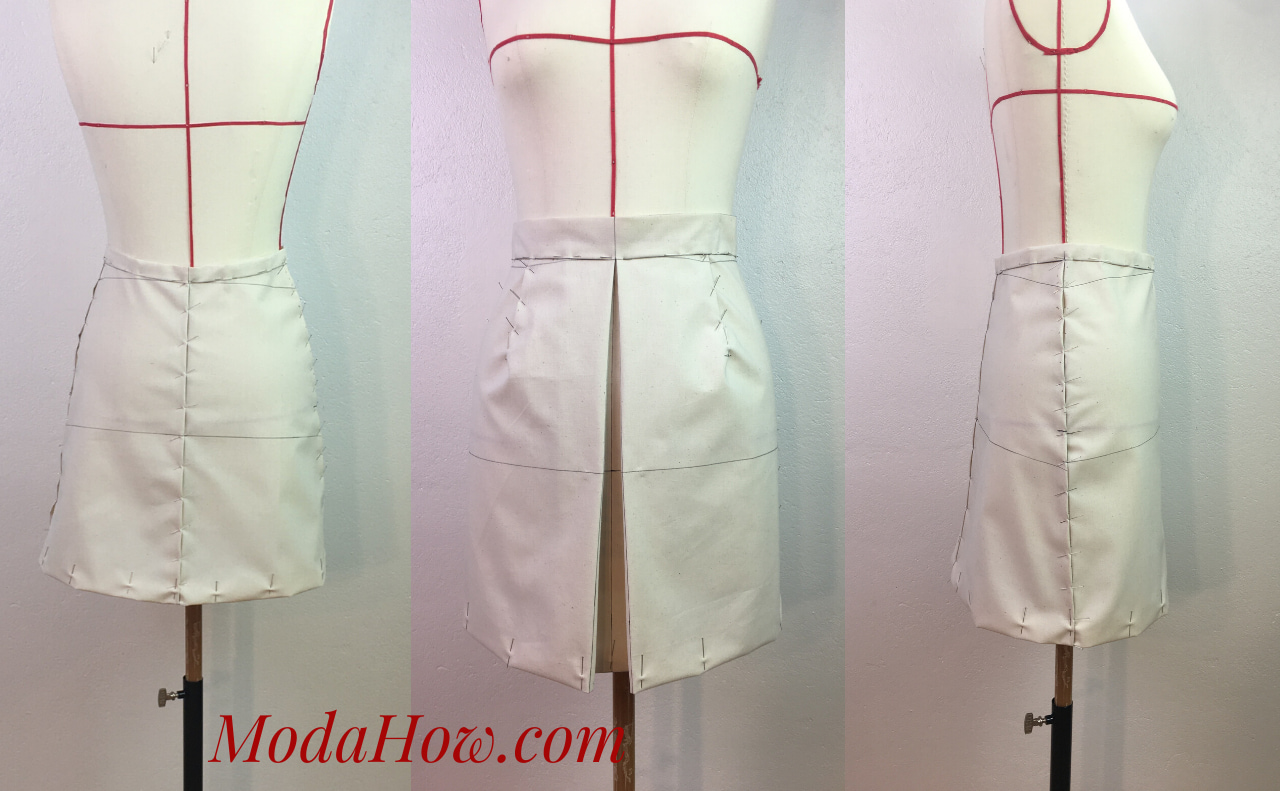
On this draping mockup, there is only one pleat and it’s hollow, in other words it’s not one pleat but two pleats that meet together creating one deep pleat in the center. This pleat being one of the most tricky one to make, if you know how to make it, which are proportions to keep in mind and how to calculate the right quantity of material needed, you will make any pleats of any width and length.
And finally, two gathered skirts. Very often, gathered skirts are light and made from lightweight fabric like silk or cotton, but here they are made from thicker fabric.
Here, the gathered skirt is a part of the dress, but the principle stays the same:
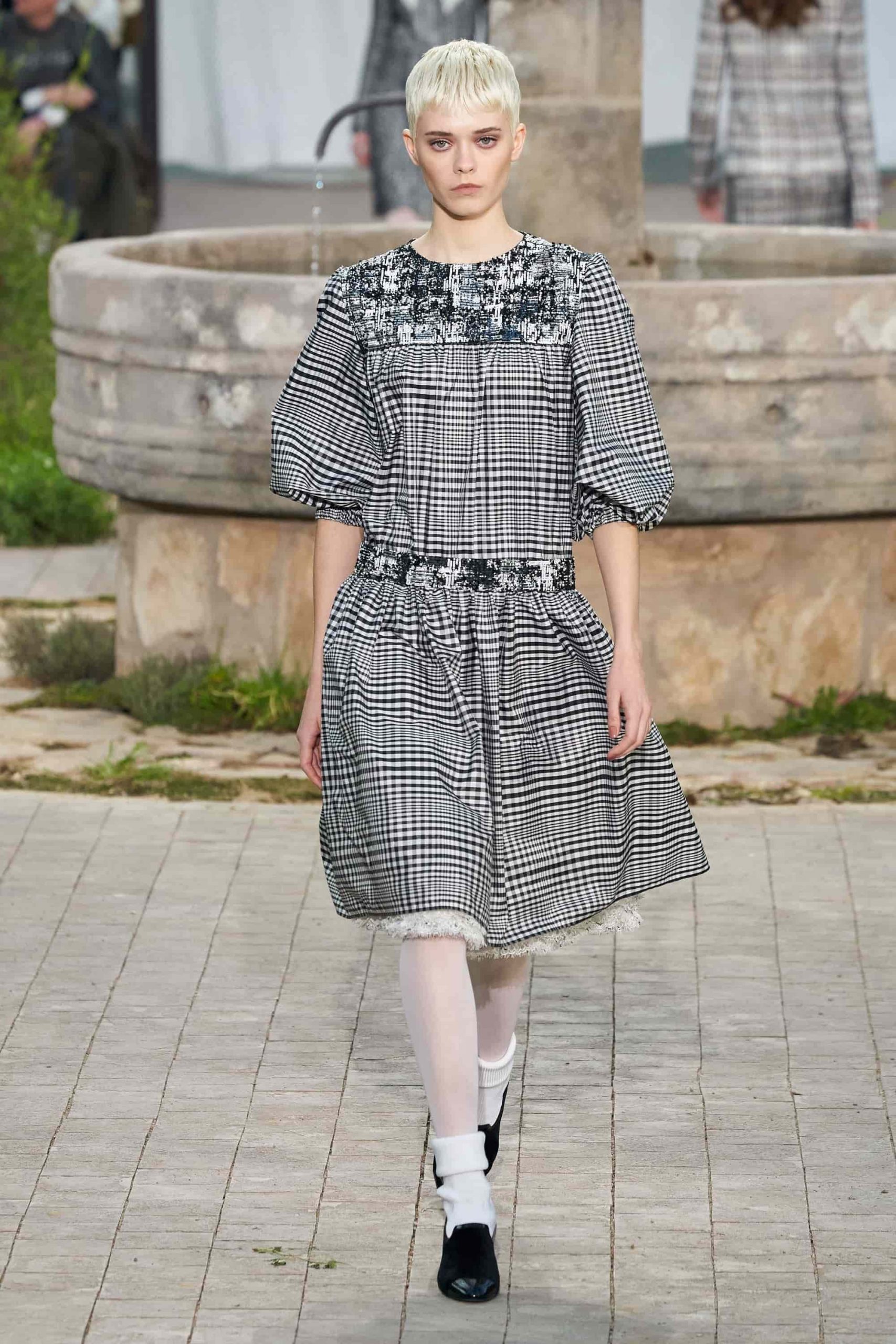
And this interesting skirt is made from thick fabric and it’s a long one but even then, it looks airy and doesn’t add any volume to the body. Why? Because of the quantity of the fabric and the right measurements of it – you should add too much, and you should’n add too little.
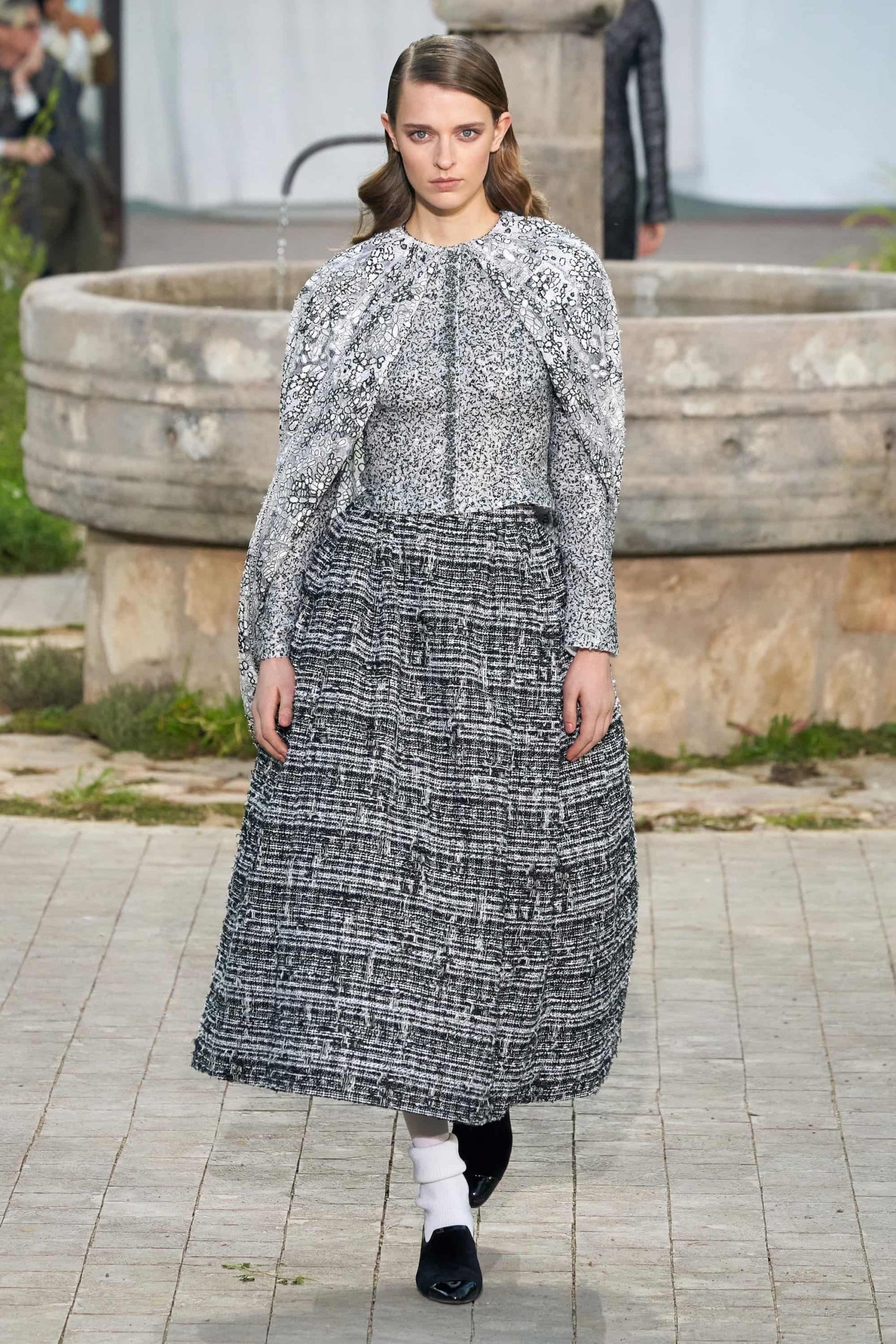
Now you’ve seen different ways how the most sophisticated skirt techniques can be used for daywear or evening wear. You can learn these techniques and other techniques as flare, straight skirt and how to make belts and hems in our “Skirts: straight, wrap, pleated and gathered” French Draping Masterclass with Madame Aurélie Vibet who teaches draping at French Institute of Fashion (IFM) and who has worked 10 years as a highest skilled master at Christian Dior Haute Couture.
*photos from Vogue France
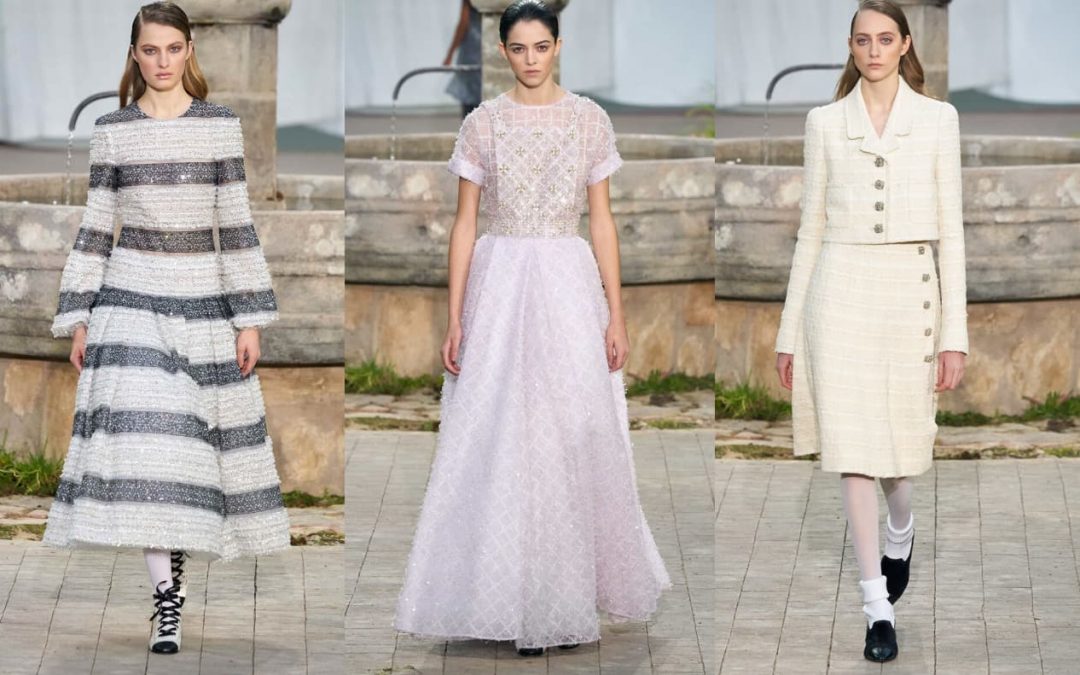
It is very wonderful thanks ,I want to study.
wz0pfw